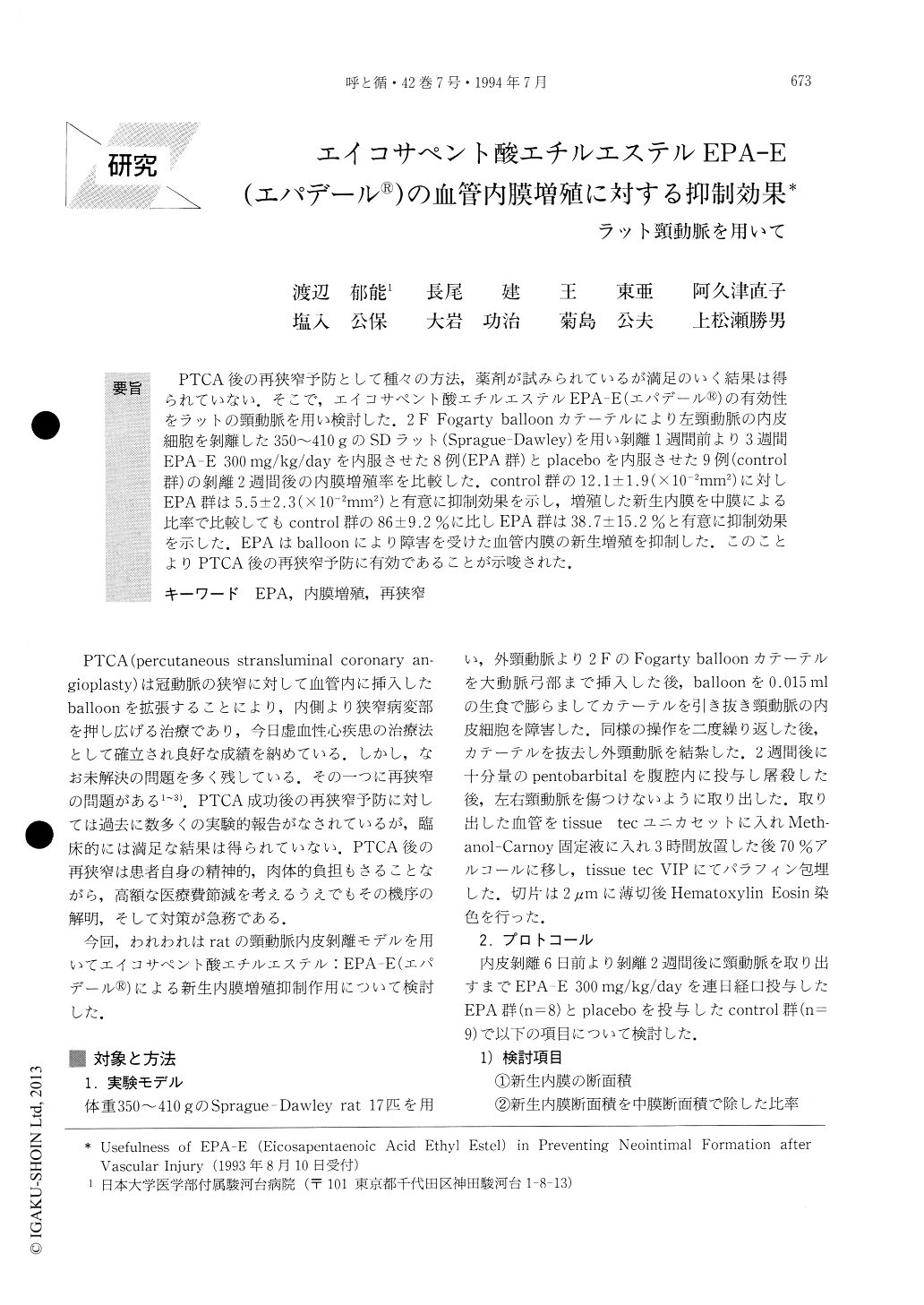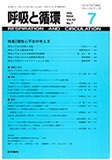Japanese
English
- 有料閲覧
- Abstract 文献概要
- 1ページ目 Look Inside
PTCA後の再狭窄予防として種々の方法,薬剤が試みられているが満足のいく結果は得られていない.そこで,エイコサペント酸エチルエステルEPA-E(エパデール®)の有効性をラットの頸動脈を用い検討した.2F Fogarty balloonカテーテルにより左頸動脈の内皮細胞を剥離した350〜410gのSDラット(Sprague-Dawley)を用い剥離1週間前より3週間EPA-E 300mg/kg/dayを内服させた8例(EPA群)とplaceboを内服させた9例(control群)の剥離2週間後の内膜増殖率を比較した.control群の12.1±1.9(×10−2mm2)に対しEPA群は5.5±2.3(×10−2mm2)と有意に抑制効果を示し,増殖した新生内膜を中膜による比率で比較してもcontrol群の86±9.2%に比しEPA群は38.7±15.2%と有意に抑制効果を示した.EPAはballoonにより障害を受けた血管内膜の新生増殖を抑制した.このことよりPTCA後の再狭窄予防に有効であることが示唆された.
Coronary restenosis is a reparative response after percutaneous transluminal coronary angioplasty (PTCA) and remains a major problem. Eicosapentaenoic acid (EPA) is a naturally occurring fatty acid found in certain fish oils. Fish oils have attracted interest as potential agents against the development of atherosclerosis. This study assessed EPA-E administrated orally in doses of 300 mg/kg/day from 6 days before to 14 days after the surgical procedure for vascular injury. Pathological examinations were performed 2 weeks after the procedure.

Copyright © 1994, Igaku-Shoin Ltd. All rights reserved.


